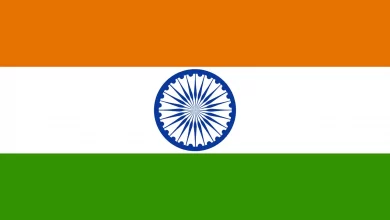Kazakhstan, located in Central Asia, is a vast and diverse country with a rich history and natural beauty. As the ninth-largest country in the world, it spans across diverse landscapes, including the vast steppes, majestic mountains, and the arid desert of the Central Asian region. Kazakhstan gained independence from the Soviet Union in 1991 and has since transformed into a modern nation with a growing economy. The country is known for its cultural heritage, with a blend of Turkic, Persian, and Russian influences. Kazakhstan is also home to the Baikonur Cosmodrome, the world’s first and largest operational space launch facility. Its vibrant cities, such as the capital Nur-Sultan and cultural hub Almaty, showcase a mix of traditional and contemporary architecture, bustling markets, and a diverse culinary scene. With its natural resources, including oil, gas, and minerals, and its strategic location at the crossroads of Europe and Asia, Kazakhstan continues to play a significant role in the region’s economic and geopolitical landscape.
- Size and Geography: Kazakhstan is the ninth-largest country in the world by land area. It spans an area of approximately 2.7 million square kilometers, which is equivalent to the size of Western Europe. It is bordered by Russia, China, Kyrgyzstan, Uzbekistan, and Turkmenistan, as well as the Caspian Sea.
- Diverse Landscape: Kazakhstan boasts a diverse geography, encompassing steppes, deserts, mountains, and lakes. The vast Kazakh Steppe covers a significant portion of the country and is one of the world’s largest uninterrupted grassland expanses. The Tien Shan and Altai Mountains, along with Lake Balkhash and Lake Issyk-Kul, add to the country’s stunning natural beauty.
- Nomadic Heritage: Kazakhstan has a rich nomadic heritage, with a long history of nomadic pastoralism. The traditional lifestyle of nomadic herding played a vital role in shaping the country’s culture, customs, and traditions.
- Cosmodrome at Baikonur: Baikonur Cosmodrome, located in Kazakhstan, is the world’s first and largest operational space launch facility. It has been the primary launch site for Russian space missions since the 1950s and continues to play a significant role in international space exploration.
- Ethnically Diverse: Kazakhstan is a multiethnic country with more than 130 different ethnic groups. The largest ethnic group is the Kazakhs, but there are also significant populations of Russians, Uzbeks, Ukrainians, Germans, Tatars, and many others.
- Astana and Almaty: Nur-Sultan (formerly Astana) is the capital city of Kazakhstan since 1997. It is a modern and futuristic city known for its unique architecture and futuristic skyline. Almaty, the former capital, is the largest city and remains the country’s cultural and commercial hub.
- Economy and Natural Resources: Kazakhstan is rich in natural resources, including oil, gas, minerals, and metals. It is one of the world’s leading producers of uranium and has significant reserves of other minerals like copper, gold, and zinc. The country’s economy has been driven by its extractive industries, but efforts are being made to diversify into other sectors.
- Language and Alphabet: The official language of Kazakhstan is Kazakh, a Turkic language. Russian is also widely spoken and considered an official language. In 2017, Kazakhstan transitioned from the Cyrillic to the Latin alphabet, a process known as the “New Alphabet Reform.”
- Astana EXPO 2017: Kazakhstan hosted the international exposition, EXPO 2017, in Astana. The theme of the exhibition was “Future Energy,” focusing on sustainable energy solutions and attracting participants from around the world.
- Kazakh Cuisine: Kazakh cuisine features a variety of traditional dishes. Popular Kazakh foods include beshbarmak (boiled meat with noodles), kazy (horse meat sausage), manti (steamed dumplings), and kumys (fermented mare’s milk), which holds cultural significance as a traditional drink.
- Ancient History: Kazakhstan has a rich ancient history dating back thousands of years. The region was home to various ancient civilizations, including the Saka, Scythians, and Turkic Khaganate, which played significant roles in Central Asia’s history.
- Aral Sea Crisis: Kazakhstan shares a portion of the shoreline with the Aral Sea, which has faced a severe ecological crisis. Due to extensive irrigation projects and diversion of rivers for agriculture, the sea has shrunk significantly, leading to devastating environmental and socio-economic consequences.
- The Kazakh Eagle Hunters: The tradition of eagle hunting is deeply rooted in Kazakh culture. It involves trained hunters, known as berkutchi, who use golden eagles to hunt game in the mountains of Kazakhstan. This unique practice has been recognized as an Intangible Cultural Heritage by UNESCO.
- Charyn Canyon: Located in southeastern Kazakhstan, Charyn Canyon is a stunning natural wonder known for its unique rock formations and vibrant colors. Often referred to as the “Grand Canyon’s little brother,” it offers breathtaking views and attracts nature enthusiasts and hikers.
- Baikonur Cosmodrome: Baikonur Cosmodrome, located in Kazakhstan, is not only famous for space launches but also for being the site where Yuri Gagarin, the first human in space, was launched aboard Vostok 1 in 1961.
- Kazakh Traditions: Kazakhstan has a rich tapestry of traditions and customs. Traditional arts and crafts, music, dance, and folklore continue to be celebrated, showcasing the country’s cultural heritage.
- Nature Reserves and Wildlife: Kazakhstan is home to numerous nature reserves and national parks that protect its diveinteresting facts about kazakhstanrse ecosystems and wildlife. The Aksu-Zhabagly Nature Reserve, Altyn-Emel National Park, and the Saryarka Steppe are just a few examples of the country’s natural treasures.
- Silk Road Connections: Kazakhstan played a significant role as a vital crossroads along the ancient Silk Road, which connected Europe and Asia for trade and cultural exchange.
- Important Cities: The country’s cities, such as Almaty and Taraz, were important stops along this historic trade route.
- Kazakh Wrestling: Traditional Kazakh wrestling, known as “Kazakh kuresi” or “kazaksha kures,” is a popular sport in the country. It involves grappling techniques and emphasizes strength, skill, and agility.
- Baiterek Tower: The Baiterek Tower is an iconic landmark in Nur-Sultan (formerly Astana). It is a 97-meter-tall tower with a distinctive golden sphere at the top, representing a Kazakh legend about a mythical bird and a golden egg.
- The Kazakh Steppe: The Kazakh Steppe, also known as the Great Steppe, is one of the world’s largest grassland ecosystems. It stretches across the central part of Kazakhstan and is home to diverse plant and animal species, including saiga antelopes, steppe eagles, and wild tulips.
- Shymkent: Shymkent is the third-largest city in Kazakhstan and is known for its rich history and cultural heritage. It is a melting pot of different ethnic groups and features numerous historical sites, museums, and traditional markets.
- Multilingual Society: Kazakhstan is a multilingual society where various languages are spoken. Alongside Kazakh and Russian, languages such as Uzbek, Uighur, Ukrainian, German, and Korean are also spoken by different ethnic groups.
- Land of Lakes: Kazakhstan is home to numerous lakes, both natural and man-made. Lake Balkhash, Lake Zaysan, Lake Alakol, and Lake Kaindy are among the picturesque lakes that offer opportunities for recreational activities and breathtaking scenery.
- Ancient Mausoleums: Kazakhstan features ancient mausoleums and architectural monuments that showcase its historical and cultural significance. The Mausoleum of Khoja Ahmed Yasawi in Turkestan and the Aisha Bibi Mausoleum near Taraz are notable examples.
- Kolsai Lakes: The Kolsai Lakes are a series of stunning alpine lakes nestled in the Tien Shan Mountains of southeastern Kazakhstan. Known as the “Pearls of the Northern Tien Shan,” these lakes offer breathtaking scenery, hiking trails, and opportunities for camping and fishing.
- Kokpar: Kokpar, also known as buzkashi or ulak tartysh, is a traditional equestrian sport played in Kazakhstan. It involves two teams mounted on horses competing to grab a goat carcass and score points by carrying it to a goal.
- Astana Opera House: The Astana Opera House in Nur-Sultan is a world-class theater known for its exceptional performances of opera, ballet, and classical music. It showcases local talent as well as international productions.
- National Holidays: Kazakhstan celebrates several national holidays, including Nauryz Meyrami (a traditional spring festival), Independence Day on December 16th, and Victory Day on May 9th, commemorating the Soviet Union’s victory in World War II.
- Bayterek Tower: The Bayterek Tower in Nur-Sultan (formerly Astana) is a symbol of Kazakhstan’s aspirations and future. Standing at a height of 105 meters, it represents a mythical tree of life and offers panoramic views of the city.
- Caspian Sea: Kazakhstan shares a portion of the Caspian Sea, the largest enclosed body of water on Earth. The Caspian Sea is not only a significant water resource but also home to diverse marine life, including sturgeon, which produce the highly prized Caspian caviar.
- Traditional Yurt: The yurt, a portable dwelling made of felt and wood, has been an integral part of Kazakh nomadic culture for centuries. Even today, yurts are used for cultural events, festivals, and as accommodations for tourists seeking an authentic Kazakh experience.
- Burabay National Park: Burabay National Park, also known as Borovoe, is a picturesque nature reserve located in northern Kazakhstan. It is famous for its stunning lakes, unique rock formations, and lush forests, making it a popular destination for outdoor enthusiasts and nature lovers.
- Camel Racing: Camel racing is a traditional sport in Kazakhstan, particularly in the southern regions. It involves racing camels across long distances, and these events showcase the skill of the jockeys and the speed of the camels.
- World Nomad Games: Kazakhstan hosted the World Nomad Games in 2018. This international sporting event celebrates traditional nomadic culture, featuring competitions such as horseback archery, eagle hunting, kokpar (goat dragging), and traditional wrestling.
- Kok-Tobe Hill: Kok-Tobe Hill in Almaty is a popular recreational area offering stunning views of the city and the surrounding mountains. It is accessible via a cable car and features attractions like a viewing tower, amusement park, and souvenir shops.
- Eurasian National University: The Eurasian National University, located in Nur-Sultan, is one of Kazakhstan’s leading universities. It attracts students from various countries and offers a wide range of academic programs in fields such as science, engineering, economics, and humanities.
Quick Facts about Kazakhstan
- CAPITAL CITY:Cairo
- POPULATION: 19 million
- POPULATION RANK: 66th
- LARGEST CITY:Almaty
- OFFICIAL LANGUAGES:Kazakh, Russian
- GDP NOMINAL: 197.1 billion USD
- GDP RANK: 53rd
- CURRENCY:Kazakhstani Tenge
- FOUNDED:16 December 1991
- FATHER OF THE NATION:Nursultan Nazarbayev
- TOTAL AREA: 2.7 million km2
- AREA RANK: 9th worldwide
- CONTINENT:Europe and Asia
- AVERAGE LIFE EXPECTANCY:71.37 years
- ARMY STRENGTH:Around 1 Lac
- ARMY RANK: 63rd
- LITERACY RATE:99.8 percent
- PER CAPITA INCOME:25,160 PPP dollars






